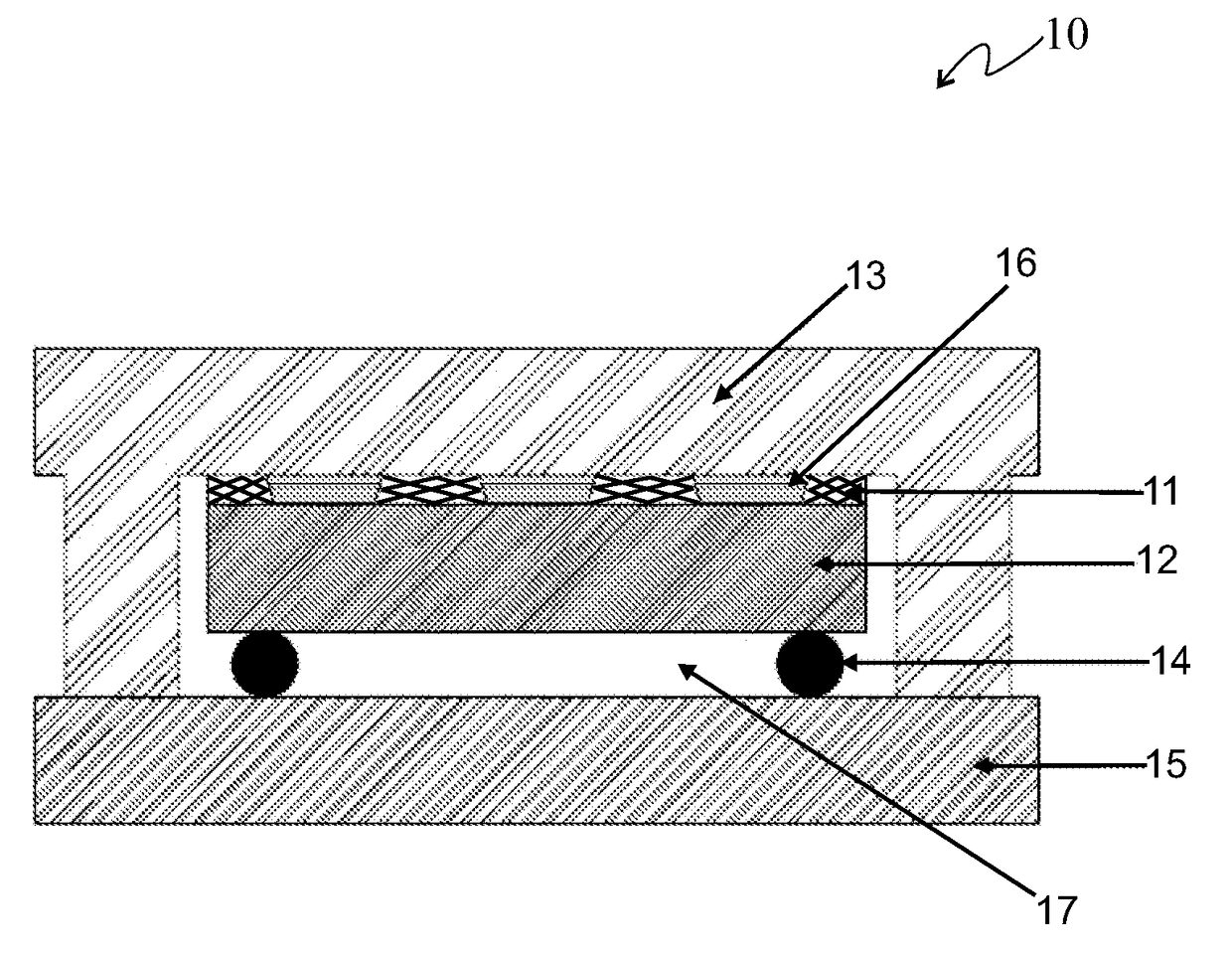Photopatternable Silicones For Wafer Level Z-Axis Thermal Interposer
a technology of thermal interposers and silicones, which is applied in the direction of photomechanical devices, instruments, photosensitive material processing, etc., can solve the problems of increasing thermal challenges, increasing power consumption and consequent heat generation in semiconductor device packages, and limiting the use of tims
- Summary
- Abstract
- Description
- Claims
- Application Information
AI Technical Summary
Benefits of technology
Problems solved by technology
Method used
Image
Examples
Embodiment Construction
[0024]As used herein, “may” confers a choice, not an imperative. “Optionally” means is absent, alternatively is present. “Contacting” means bringing into physical contact. “Operative contact” comprises functionally effective touching, e.g., as for modifying, coating, adhering, sealing, or filling. The operative contact may be direct physical touching, alternatively indirect touching. All U.S. patent application publications and patents referenced herein, or a portion thereof if only the portion is referenced, are hereby incorporated herein by reference to the extent that incorporated subject matter does not conflict with the present description, which would control in any such conflict. All states of matter are determined at 25° C. and 101.3 kPa unless indicated otherwise. All % are by weight unless otherwise noted. All wt % values are, unless otherwise noted, based on total weight of all ingredients used to synthesize or make the composition, which adds up to 100 wt %. Any Markush ...
PUM
| Property | Measurement | Unit |
|---|---|---|
| temperature | aaaaa | aaaaa |
| temperature | aaaaa | aaaaa |
| temperature | aaaaa | aaaaa |
Abstract
Description
Claims
Application Information
 Login to View More
Login to View More - R&D
- Intellectual Property
- Life Sciences
- Materials
- Tech Scout
- Unparalleled Data Quality
- Higher Quality Content
- 60% Fewer Hallucinations
Browse by: Latest US Patents, China's latest patents, Technical Efficacy Thesaurus, Application Domain, Technology Topic, Popular Technical Reports.
© 2025 PatSnap. All rights reserved.Legal|Privacy policy|Modern Slavery Act Transparency Statement|Sitemap|About US| Contact US: help@patsnap.com



